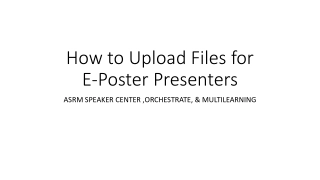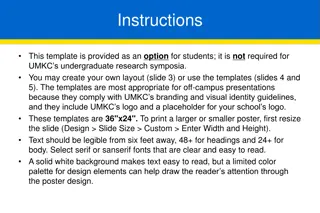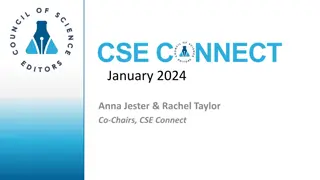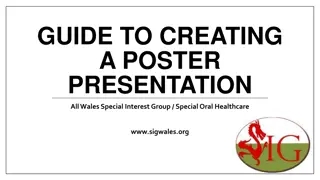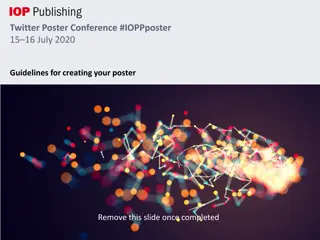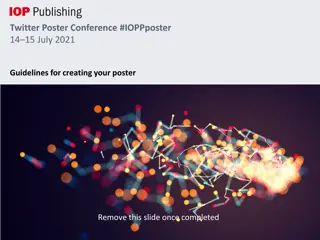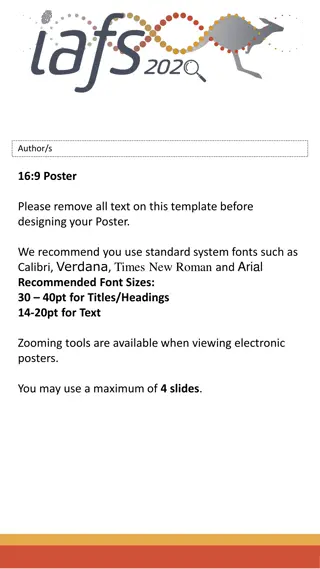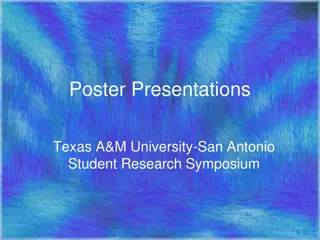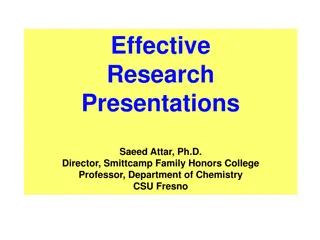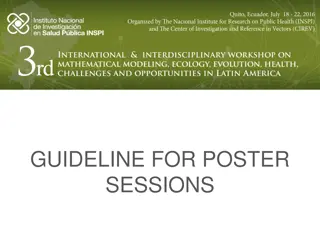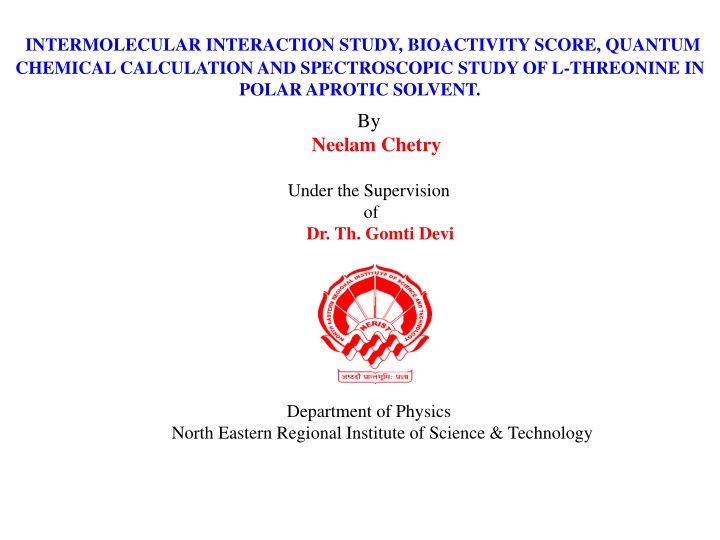
Study of Intermolecular Interactions and Bioactivity of L-Threonine in Polar Aprotic Solvent
Explore the intermolecular interaction, bioactivity score, quantum chemical calculation, and spectroscopic study of L-Threonine in a polar aprotic solvent, Dimethyl Formamide (DMF). The research involves experimental and theoretical vibrational frequencies, molecular structures, Raman spectra analysis, and natural bond orbital analysis. Gain insights into the behavior of L-Threonine in various solvent concentrations through computational methods.
Download Presentation

Please find below an Image/Link to download the presentation.
The content on the website is provided AS IS for your information and personal use only. It may not be sold, licensed, or shared on other websites without obtaining consent from the author. If you encounter any issues during the download, it is possible that the publisher has removed the file from their server.
You are allowed to download the files provided on this website for personal or commercial use, subject to the condition that they are used lawfully. All files are the property of their respective owners.
The content on the website is provided AS IS for your information and personal use only. It may not be sold, licensed, or shared on other websites without obtaining consent from the author.
E N D
Presentation Transcript
INTERMOLECULAR INTERACTION STUDY, BIOACTIVITY SCORE, QUANTUM CHEMICAL CALCULATION AND SPECTROSCOPIC STUDY OF L-THREONINE IN POLAR APROTIC SOLVENT. By Neelam Chetry Under the Supervision of Dr. Th. Gomti Devi Department of Physics North Eastern Regional Institute of Science & Technology
2 Introduction The amino acid under study, L-Threonine is an essential polar amino-acid in humans and the solvent used in this research work is Dimethyl Formamide(DMF) which is a polar hydrophilic aprotic solvent. Molecular structure of L-Threonine+2DMF Molecular structure of L-Threonine Experimental method: Computational method: The Raman spectra were recorded in the region between 500-3500 cm-1 for neat solute L- Threonine and neat DMF as well as for the solute-solvent mixtures at different concentrations (0.1M,0.3M,0.5M,0.7M,0.9M) by using Horiba XPloral Micro- Raman system possessing excitation source of 785 nm. All the theoretical calculations have been performed within the framework of DFT, IEFPCM and M062X methodsusing the GAUSSIAN 09 program package with the basis set 6- 311++G(d,p). The computed frequencies are scaled with 0.9668 and 0.9489 for DFT and M062X methods respectively to eliminate the error. Molecular structure of L- Threonine+1DMF
Results and discussion Vibrational assignment: Some of the experimental and theoretical vibrational frequencies of L-Threonine, L- Threonine+DMF and L-Threonine+2DMF are assigned along with their PED (%) values and shown in Table 2. 3 Some selected bond lengths of L- Threonine, L-Threonine DMF and L-Threonine-2DMF MIXTURES BOND BOND LENGTH ( ) DFT IEFPCM (B3LYP/6- 311++ G(d,p) M062X(6 -311++G (d,p) Raman (Expt.) IR Vibrational Assignments 1C-4O 2O-3H 12O-13H 10C-11H 4O-28H 12O-13H 5C-6H 27C-28H 1C-4O 1.2068 1.0073 0.9772 1.1166 2.1031 0.9758 1.1388 1.1079 1.2129 (B3LYP/6- 311++ G(d,p) (Expt.) L-Threonine (Monomer) L-THREONINE 3517(100) 3520(100) 3488(100) 3513 3446 (O12-H13) L-Threonine+DMF 3141(100) 3132(100) 3130(100) (O2-H3) 3128 2749 3168 2709 2767(94) 2763(97) 2756(95) (C10-H11) 4O-28H 2.1031 1733(88) 1720(88) 1727(88) 1752 (C1=O4) 7N-8H 1.0308 L-THREONINE-1DMF 3521(100) 3144(100) 3532(100) 3128(99) 3501(100) 3137(100) 3521 3498 (O12-H13) (O2-H3) O12-H13 0.9997 39C=41O 1.2345 L-Threonine+2DMF 2883(97) 2884(97) 2858(95) 2871 2858 (C27-H28) C35-H37 1.1168 2748(94) 2745(94) 2742(92) 2781 (C10-H11) 27C=29O 1.2315 1721(84) L-THREONINE-2DMF 2757(95) 1710(84) 3418(96) 1709(85) 1716(85) 1659 1655 (C1=O4) 27C-28H 10C-11H 1.1086 1.1191 1C=4O 1.2124 2748(94) 1704(85) 3413(97) 2747(95) 1709(84) 3395(95) (C10-H11) (C1=O4) (N7-H9) 3226(76) 3221(82) 3224(87) (O12-H13), (N7-H8) 3045(99) 2884(99) 3038(99) 2871(99) 3047(99) 2859(98) (O2-H3) (C27-H28)
Results and discussion contd.. 4 The comparison of the experimental Raman spectra of Threonine+DMF at 0.1M, 0.3M, 0.5M, 0.7M and 0.9M concentrations within the range (0-2000) cm-1ad (2000-4000) cm-1 are shown in figures below. Variation of Raman peak frequencies of C=O, O-H and C-H stretching mode of L-Threonine on interaction with solvent DMF at different concentrations are shown below
Results and discussion contd.. 5 Natural Bond Orbital analysis: The NBO calculation of Threonine+DMF are performed using NBO 5.0 program. Bioactivity score prediction: The substantial potential of an organic compound to be a drug applicant is manifested by the bioactivity score acquired by the compound. Ligand GPCR Ligand Ion Kinase inhibitor Nuclear receptor ligand -2.73 Protease inhibitor Enzyme inhibitor DONOR (O2-H3) (C5-H6) ACCEPTOR *(C1-O4) *(C1-O4) E(2)(kcal/mol) 4.69 6.61 Channel modulator -2.20 L-Threonine L- -2.47 -3.27 -2.07 -2.14 (C14-H15) *(C10-O12) 4.89 n2 (O2) *(C1-O4) 45 Threonine+ -0.03 0.21 -0.50 -0.33 -0.07 0.10 n2 (O4) *(C1-O2) 31.07 (C10-H11) *(O12-H13) 2.24 1DMF L- *(C27-O29 (C10-O12) *(C27-O29) *(C5-H6) 2.43 0.59 Threonine+ -2.47 -2.20 -3.27 -2.73 -2.07 -2.14 Drug likeness (Lipinski s parameters): The potential of a compound to operate as a drug in an indivitual is evaluated by Lipinski s rule of five. The physio- chemical properties of the titled compounds evaluated under the Swiss ADME online software reveals the oral bioavailability of a compound. 2DMF Hydrogen bond donors (nOHNH) Hydrogen bond acceptors (nON) Numberof rotatable bonds Ligand TPSA ( 2) Molecula r weight (g/mol) Milog P L-Threonine 83.55 119.12 -3.30 3 4 4 L- Threonine+1 96.02 192.22 -3.35 5 6 6 DMF L- Threonine+2 111.65 265.31 -3.52 6 8 2 DMF
Conclusions 6 Here the experimentally observed results have been compared with the theoretically calculated values and the experimental results are in good support with the theoretical one. From the Raman peak frequencies of C=O,C-H and O-H stretching it is observed that the peak frequency for C=O decreases and that for C-H and O-H increases from 0.1M- 0.9M concentration hence the peak frequency of C=O stretching shows red shift while that of C-H and O-H stretching shows blue shift. From the bioactivity score prediction analysis and druglikeness behaviour analysis of the compounds it can be empitomize that the titled compounds are orally bioactive and entirely vindicates the idiosyncrasy of a compound to operate as a drug.
24 Thank You for your kind attention

